Decoding the New Subaru Warranty: Bumper-to-Bumper vs. Powertrain
Understanding Your Subaru Warranty: Why It Matters
A car is one of the biggest investments most people make, and a warranty acts as a safety net against unexpected repair costs. For Subaru owners, knowing the specifics of your warranty means you can anticipate what expenses might arise and when. It ensures that if a manufacturing defect causes a problem, you won't be left with a hefty bill. This knowledge is not just for when things go wrong; it also empowers you to make informed decisions about vehicle maintenance, aftermarket modifications, and even whether an extended warranty is right for you down the line. A solid understanding of your Subaru new car warranty is a cornerstone of responsible vehicle ownership.The Core Protection: Subaru's New Vehicle Limited Warranty (Bumper-to-Bumper)
Think of the Subaru Bumper-to-Bumper warranty as your comprehensive initial coverage. Officially known as the New Vehicle Limited Warranty, it covers most components of your new Subaru against defects in materials or workmanship. This coverage typically lasts for 3 years or 36,000 miles, whichever comes first. Essentially, if a part of your car (from the infotainment system to the climate control, power windows, or even a minor electrical issue) malfunctions due to a manufacturing flaw within this period, Subaru will fix or replace it at no cost to you.However, it's important to clarify what 'bumper-to-bumper' doesn't include. It generally excludes wear-and-tear items like tires (which have their own manufacturer's warranty), brake pads, wiper blades, filters, and light bulbs, as well as routine maintenance services like oil changes and tire rotations. Damage resulting from accidents, misuse, improper maintenance, or environmental factors (like hail or floods) is also not covered. This warranty is designed to protect against defects, not against the normal aging or usage of the vehicle, or external damage.
Powering Your Adventures: Subaru's Powertrain Limited Warranty
While the Bumper-to-Bumper warranty is broad, the Subaru Powertrain warranty offers deeper, longer-lasting protection for the most critical and expensive components of your vehicle. This coverage extends for 5 years or 60,000 miles, whichever comes first. The powertrain is essentially what makes your car move – it encompasses the engine, transmission, and the all-important drive axle components unique to Subaru's symmetrical all-wheel drive system.Specifically, the powertrain warranty covers major engine parts like the engine block, cylinder heads, internal parts, oil pump, water pump, and fuel pump. For the transmission, it covers the case, all internal parts, torque converter, and drive shafts. Given that Subaru's Symmetrical All-Wheel Drive is a cornerstone of its performance, this warranty also covers key drive axle components, including the transaxle case and all internal parts, as well as the constant velocity (CV) joints and propeller shaft. Any manufacturer defects in these vital systems are covered, providing substantial peace of mind for the long haul, especially considering the high cost associated with powertrain repairs.
The Crucial Differences: Bumper-to-Bumper vs. Powertrain
The fundamental difference between these two warranties lies in their scope and duration. The Bumper-to-Bumper warranty (3 years/36,000 miles) is like a wide, shallow net, catching almost everything *except* wear items and external damage. It covers the majority of the car's systems, from comfort features to electronics and safety sensors, ensuring that your initial ownership experience is as trouble-free as possible due to manufacturing flaws.In contrast, the Powertrain warranty (5 years/60,000 miles) is a narrower, deeper net. It focuses exclusively on the most expensive, essential components that propel your vehicle, offering extended protection where repair costs are typically highest. While it doesn't cover your radio or air conditioning, it guards against catastrophic failures in the engine, transmission, and drive system. Understanding this distinction is key to knowing what type of repair falls under which umbrella and for how long you're covered for specific issues. It's a strategic layering of protection: broad initial coverage, followed by specialized, longer-term coverage for critical mechanical systems. This structure is common among many auto manufacturers, but knowing your Subaru warranty coverage details is essential.
Beyond the Basics: Other Subaru Warranty Coverages
Subaru offers additional warranties that provide even more layers of protection. The Rust Perforation Limited Warranty covers against corrosion and rust through for 5 years with unlimited mileage, safeguarding the structural integrity of your vehicle's body. There's also a Seatbelt Limited Warranty, which covers seatbelts for the useful life of the vehicle, ensuring a crucial safety component remains functional.Furthermore, federal and state regulations mandate specific Emissions Control System Warranties. These vary by state but typically cover certain emission-related components for a longer period, sometimes up to 8 years or 80,000 miles, ensuring your Subaru meets environmental standards. These often overlooked coverages further enhance your peace of mind and demonstrate Subaru's commitment to quality and safety beyond the primary mechanical systems. Always consult your owner's manual for specific durations and covered components for your model year and region.
What Voids Your Warranty? Don't Get Caught Off Guard!
While your Subaru warranty offers excellent protection, certain actions can unfortunately void parts or all of it. One of the most common pitfalls is neglecting scheduled maintenance. Failing to follow Subaru's recommended service intervals and using non-approved parts or fluids can be grounds for denying a warranty claim related to systems affected by that neglect. Always keep meticulous records of your Subaru maintenance, including receipts and dates, whether you perform it yourself or have it done professionally.Excessive abuse, such as racing, off-roading beyond the vehicle's design limits, or using the vehicle for purposes it wasn't intended for (e.g., commercial hauling with a passenger car), can also void the warranty. Significant aftermarket modifications, particularly those that alter the vehicle's performance or key systems (like engine tuning or suspension lifts), may also jeopardize warranty coverage for related components. Even a salvage or flood-damaged title can entirely void your factory warranty. Always check with your dealer before making major modifications or if you have questions about specific scenarios to ensure your valuable Subaru warranty protection remains intact.
Considering Extended Warranties for Extra Peace of Mind
Once your New Vehicle Limited Warranty (bumper-to-bumper) expires, and even your Powertrain warranty reaches its limit, you might start thinking about what comes next. This is where Subaru extended warranty options, like Subaru Added Security, come into play. An extended warranty isn't a factory warranty but a service contract purchased separately, designed to protect you from unexpected repair costs after your original coverage ends.These plans can extend comprehensive coverage for many components for much longer durations, often up to 7 years or 100,000 miles, or even more. While an extended warranty is an additional upfront cost, many Subaru owners find it a worthwhile investment, especially as vehicles age and the likelihood of needing repairs increases. It offers a continuation of the peace of mind you enjoyed with your factory warranty, guarding against potentially expensive future repairs and helping to maintain your vehicle's value. When considering an extended warranty, always weigh the cost against your typical driving habits, desired ownership period, and risk tolerance for unexpected repair bills.
Conclusion
Navigating the ins and outs of your new Subaru's warranty might seem daunting at first, but understanding the core differences between the Bumper-to-Bumper and Powertrain coverage is crucial for every Subaru owner. These warranties are more than just legal documents; they are a testament to Subaru's commitment to quality and your peace of mind. By knowing what each covers, its duration, and what actions could potentially void your protection, you're empowered to make smart choices that safeguard your investment. Remember to always consult your owner's manual and, when in doubt, speak to your authorized Subaru dealer. Drive confidently, knowing your adventurous Subaru is well-protected!Where can I find my VIN?

Related Topics
- New vs. CPO Audi: A Deep Dive into Warranty Coverage
- Audi Certified Pre-Owned (CPO) Warranty Explained: How it Extends Your Peace of Mind
- The New Audi Owner's Guide: Understanding Your Factory Limited Warranty (and What's Covered)
- Buying a Pre-Owned Audi? Understanding the Certified Pre-Owned (CPO) Warranty

